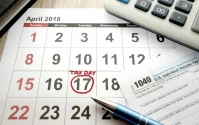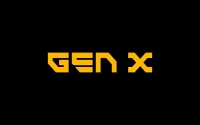The Aster crypto token sits at a precipice. As of Tuesday, its price hovered around $1.80, a significant correction from its recent record high of around $2.40—to be more exact, $2.43. For traders who live and die by chart patterns, this is a moment of high drama. The token is testing a key support zone, a floor between $1.60 and $1.80 where buyers have previously stepped in. The digital tea leaves are being read, and the interpretations are, as always, starkly divided.
On one side, you have the optimists. They see a classic "falling wedge" pattern, a technical formation that often precedes a bullish breakout. Analyst Michaël van de Poppe has publicly speculated about a potential rebound of 15% to 35% from this very zone. Trader BitcoinHabebe goes further, predicting the aster coin could touch $3 in October if the bounce is decisive. Their thesis is built on price history and pattern recognition. They are betting that the market’s past behavior will predict its future.
On the other side, you have the skeptics. They see a "descending triangle," a bearish pattern that suggests the support is weakening with each test. A break below this floor, van de Poppe himself warns, could send the price tumbling toward the next support level around $1.25. Trader Gordon, who claims to have netted $1.40 million by shorting ASTER, is more blunt, warning the token may "keep bleeding."
This is the standard noise of any traded asset: a battle of conflicting patterns and dueling predictions. But with the aster price, this entire debate feels like a distraction from the one piece of data that actually matters.
Forget the Charts, Do the Math
The Oncoming Supply Wave
While chartists argue about wedges and triangles, a simple, non-negotiable event is scheduled for October 17. On that day, a token unlock will release 183.13 million ASTER into circulation. At the current price, that’s approximately $325 million of new supply hitting the market. This isn't a small figure. It represents 11% of the token's entire market capitalization, set to be injected in a single day.

And this is the part of the report that I find genuinely puzzling. The market's obsession with interpreting historical price squiggles while a supply event of this magnitude is printed on the calendar is a recurring pathology in crypto. Technical analysis is a study of psychology and momentum reflected in past price action. A token unlock is a fundamental, mechanical change to the supply/demand equation. One is a forecast based on shadows; the other is a scheduled tectonic shift.
The data, sourced from DropStab.com, gets worse for the bulls. Gordon’s warning that roughly $700 million worth of ASTER is set to unlock by the end of the year isn't hyperbole; it's an observation based on the public vesting schedule. The question ceases to be "Will the falling wedge pattern hold?" and becomes "Can the Aster ecosystem generate an additional $325 million in net new demand on October 17 to absorb this supply without the price collapsing?"
This isn’t to dismiss the project’s fundamentals outright. Aster is a significant player, a Binance-linked DEX processing nearly $1 billion in daily trading volume. Its ecosystem holds over $2.26 billion in Total Value Locked (a metric for assets deposited in the protocol), according to DeFi Llama. These are impressive numbers that demonstrate real usage and a substantial user base. But are they enough? The project's own leadership seems uncertain. The fact that they are publicly considering implementing a vesting schedule for airdrop recipients is a tacit admission that they, too, are concerned about the price impact of these unlocks. It is a reactive measure, not a proactive one.
The entire bull thesis rests on the hope that the existing demand, plus some speculative fervor, will be sufficient to soak up an 11% supply increase. The bearish thesis doesn't require hope or speculation. It just requires a calendar and a calculator. Given the two conflicting technical patterns, the descending triangle, which projects a decline toward $1.26, aligns far more closely with the impending supply-side pressure than the bullish wedge. The market seems to be pricing in this risk, even if the commentary hasn't fully caught up. The support at $1.25, tested back on September 21-22, looks less like a distant possibility and more like a logical destination if current support fails. The narrative of a coming price war is compelling, but the numbers point toward a flood.
---
A Simple Matter of Arithmetic
The debate between chart patterns and analyst predictions is ultimately noise. The core issue for the aster price is not sentiment; it is arithmetic. On October 17, the denominator in the price equation—the total supply of tokens—will increase substantially. For the price to remain stable, let alone rise, the numerator—market demand—must increase by a proportional amount, in this case, by hundreds of millions of dollars in a very short period. Hope is not a source of demand. The numbers, unclouded by emotion or chart art, suggest the path of least resistance is downward until the market proves it can digest this supply.
Reference article source:









